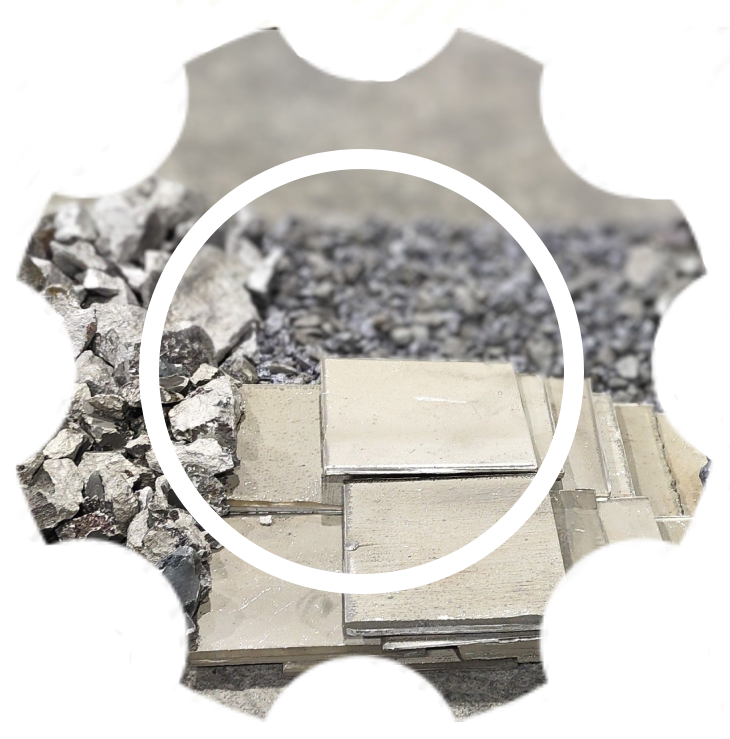
Heat Resistant, Corrosion Resistant and Proprietary Alloys
In order to modify its composition and strengthen its intrinsic qualities, alloys are combined with additional components. There are many distinct types of metal alloys, and there are almost infinite combinations. At Cast Alloy Products LLC, we will walk you through some of the best-known metal alloys.
Chemistries

Chemistries

Definition
Stainless steels are that which contains a minimum of 10.5% Chrome. They are not susceptible to oxidation in normal environments.
Some stainless steels are made up of more than 30% Chrome and less than 50% Iron. Its characteristics of resistance are obtained thanks to the formation of a protective oxide that prevents the contact of the metal base with the aggressive atmosphere. Some other elements such as nickel, molybdenum, copper, titanium, aluminum, silicon, niobium, nitrogen and selenium can be added to obtain particular mechanical characteristics.
Classification
Stainless steels can be divided into three groups according to their micro-structure, the crystalline structure of the current phase in the termal treatment process. The three families are: martensitic steel, ferritic and austenitic.
Martensitic Steels
Martensitic
The martensitic stainless steels are alloys Fe-Cr-C which in hard condition process a martensitic crystalline structure. They are ferromagnetic, heat treatable and corrosion resistant only in medium aggressive media. Chromium content is generally between 10.5 and 18% and carbon content cannot be higher than 1.2%. The carbon and chromium contents are balanced to ensure a martensitic structure. Some elements such as niobium, silicon, tungsten and vanadium are sometimes added to modify the behavior of steel during tempering. Small amounts of nickel may be added to improve corrosion resistance. Similarly, sulfur and selenium can be added to improve machinability.
Application
These steels are specified when application requires high tensile, creep and fatigue strength combined with moderate corrosion resistance requirements and uses up to 650 ° C. Its applications include steam turbines, jet engines and gas turbines. Some of these steels also find applications such as steam pipes, steam generator reheaters and overheated pipes used in fossil fuel refineries, cutlery, valve parts, gears, shafts, rolling cylinders, surgical and dental instruments, springs, cams and ball bearings.
Ferritic Steels
Ferritic
They are Fe-Cr alloys with centered cubic crystal structure (CCC). Its chrome content is in the range of 11 to 30%. Some grades may contain molybdenum, silicon, aluminum, titanium and niobium to achieve certain characteristics. Sulfur and selenium can also be added to improve machinability. They are ferromagnetic, may have good ductility and comfortability but their resistance characteristics at high temperatures are poor compared to austenitic. Its toughness can also be limited at low temperatures and in heavy sections. They are not hardenable by heat treatment and hardly by cold work.
Application
Its various classes find applications in automotive exhaust systems such as food containers, heat exchangers and pipelines containing solutions containing chloride and seawater.
Austenitic steels
Austenitic
They are the largest family of stainless steels, both in number of different types and in use. Like ferritic, they are not hardenable by heat treatment. They are non-magnetic in the annealed condition and are hardenable only by cold work. They usually have excellent cryogenic properties and excellent mechanical and corrosion resistance at high temperatures. Chromium content ranges from 16 to 26%, nickel content is less than or equal to 35% and manganese content is less than or equal to 15%. Molybdenum, copper, silicon, aluminum, titanium and niobium may also be added for better oxidation resistance characteristics.
Application
Depending on the alloying elements present in their composition, they can withstand atmospheric corrosion in various aqueous solutions in the presence of food, oxidizing (such as nitric), phosphoric and acetic acids, dilute chloride-containing solutions and sulfuric acids.
![CAP_Recycling_Logo-01[4][3] CAP_Recycling_Logo-01[4][3]](https://castalloyproducts.com/wp-content/uploads/2022/08/CAP_Recycling_Logo-0143.jpg)